|
74. Coenonympha arcania (Linnaeus, 1761) / Pearly heath / Nymphalidae – Satyrinae
NL: tweekleurig hooibeestje / D: Perlgrasfalter, Weiβbindiges Wiesenvögelchen / F: céphale
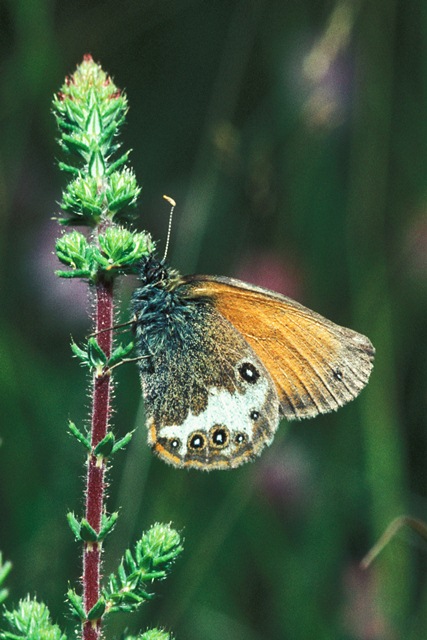 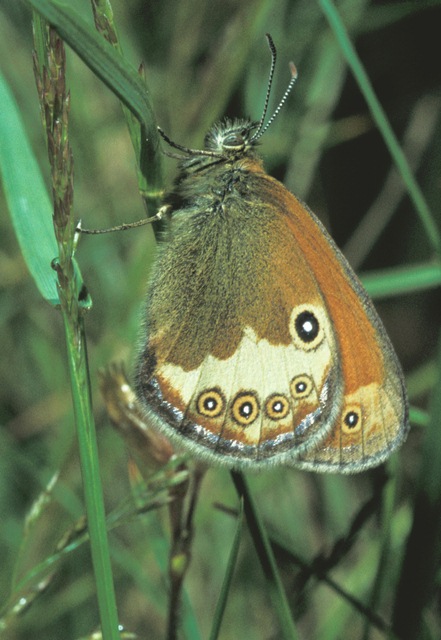 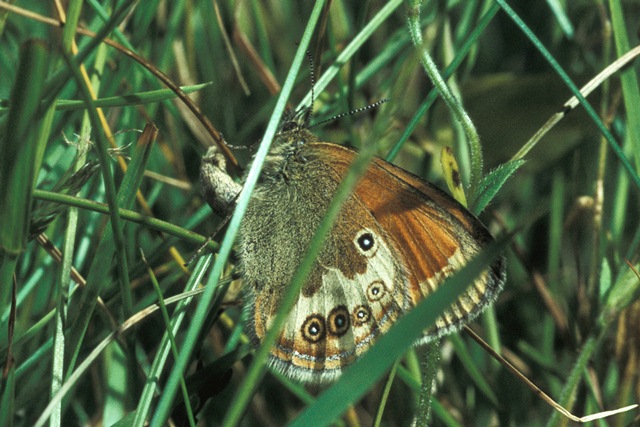
Photographs: Frits Bink ©.
Small or medium-sized, wing length 18 (16-20) mm. in the Benelux, in medium tall grass vegetation on chalk grassland and wood edges in Luxemburg and Wallonia. In Flanders known as a stray. In the Netherlands, was widely spread in southern Veluwe up to the mid 1980’s but now extinct, last seen in 1988 (Bos et al. 2006: 217-218).
Its extinction was probably a result of the decline in grass quality due to acid rain.
Butterfly is on the wing from mid-June until mid-July, peak early-July. The species is known from sub-continental to continental climates, amplitude 7 to 16, required heat sum 600°d, maximum tolerated 2000°d, corresponding climate windows 22 to 38 weeks.
Ecological characteristics
Behaviour over time
Overwintering: half grown larva in fourth instar, 7-10 mm in length, hide in tussock of the host-plant.
Reproduction: oviposition starts after 4-5 days when the body contains 46 (38-51) eggs, estimated production 1.7 times as much.
Larval feeding periods: in summer 63 (58-67) days from mid-July until early-November, in next spring 59 (48-70) days from mid-March until end-June.
Generations: one.
Spreading of risk: not observed.
Life cycle: egg 13 (7-16) days; larva 44-47 weeks; pupa 15 (10-19) days.
Life span of adult: short, 2 weeks.
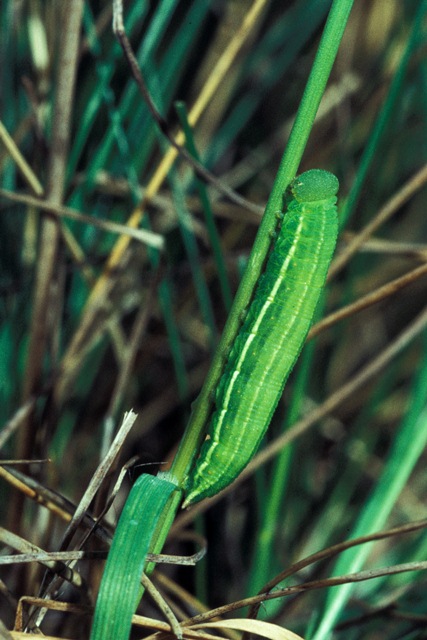 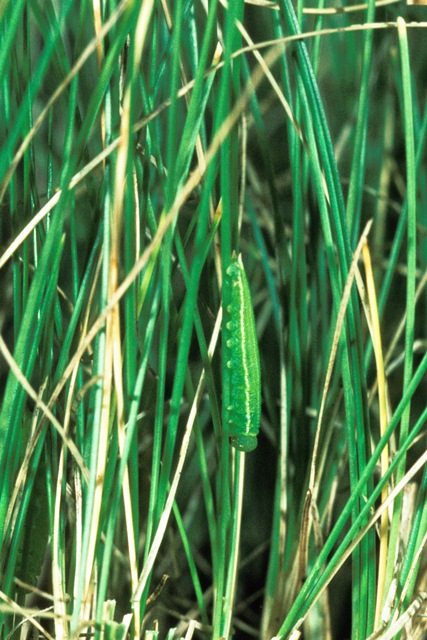
Photographs: Frits Bink ©.
Behaviour in space
From stay-at-home to migrant: stay-at-home, spatial requirement modest.
Finding a mate: male patrols.
Orientation in the landscape: gradient from wood to tall grassland.
Oviposition: on a grass tussock, chosen in the gradient.
Defence
Threats from other organisms: vulnerable, but camouflaged in the larval stage.
Threats from the environment: adverse weather conditions in the adult stage.
Feeding habits
Adult: nectar, but little feeding activity.
Larva: when young it feeds on old leaves, in spring on fresh shoots.
Larval foodplants
Plant species: Poaceae, e.g. Brachypodium pinnatum, Festuca brevipila, F. ovina, F. rubra.
Accepted in experiment: Agrostis stolonifera, Molinia caerulea, Carex pilulifera. Carex pilulifera was preferred over Brachypodium sylvaticum; refused were Arrhenatherum elatius and Deschampsia flexuosa.
Journal
Rearing experiment based on specimens from Karitzkyweg, Hoge Veluwe, Netherlands:
1 July 1983: five females captured.
7 July: 93 eggs laid.
8 August: biggest larva in L3.
9 September: larvae were active in daytime, 7 mm in length.
25 September: no feeding activity observed.
Overwintered outdoors.
5 February 1984: pot with grass tussock of Festuca rubra taken indoors.
12 February: larvae started feeding, basked during the day.
23 February: larvae had grown very little.
14 March: larvae moulted.
20 April: larvae end fourth instar, one early fifth.
3 May: larvae mid last instar, a few transferred to purple moor grass (Molinia caerulea).
8 May: one pupated.
19 May: first adult appeared, female.
24 May: second adult, female.
1 June: a number of pairing observed.
3 June: 376 eggs laid by 12 females.
5 June: first eggs hatched.
18 June: larvae end first instar.
13 July: larvae end second instar.
Overwintered indoors.
25 February 1985: larvae were active on the first warm day of the year.
8 March: larvae started to feed.
27 March: larvae 12 mm in length.
12 April: larvae last instar.
10 May: first pupae present.
20 May: all pupae consumed by a great tit (Parus major) which had found access into the green house.
Table 74-1. Results of dissections
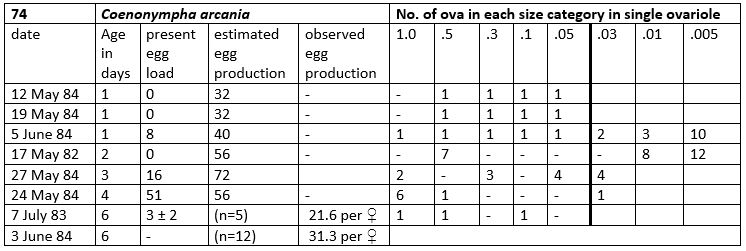
Table 74-2. Collection and observation localities
B, Torgny, 237 m, 49° 30’ 40”- 5° 29’ 04”E; 19 June 1983.
D, Arnstein 50° 01’ 57”N – 9° 47’ 41”E; 22 July 1984.
L, Kautenbach, 316 m, 49° 57’18”N – 6° 00’ 59”E; 21 June 2006.
F, Brittany, Forêt de Chevré, 47° 39’ 11”N – 3° 01’ 37”W; 29 July 1981.
F, Dommartin-la-Montagne 49° 01’ 51”N – 5° 36’ 53”E; 24 June 2006.
F, Montmédy, 217 m, 49° 31’ 07”N – 5° 21’ 33” E; 27 June 2002.
F, Lorraine, Dieue-sur Meuse 49° 05’ 11”N – 5° 27’ 25”E; 11 July 1984, 10 July 1985.
F, Lorraine, Thillot, 352 m, 49° 01’ 24”N – 5° 39’ 15”E; 25 June 2006.
F, Lorraine, Rupt devant Saint-Mihiel, 280 m, 48° 53’ 01”N – 5° 24’ 10”E; 28 June 2006.
F, Pagny-la-Blanche-Côte, 308 m, 48° 32’ 37”N – 5° 42’ 58’E; 10 July 1985, 5 July 2006.
F, Velosnes, 179 m, 49° 30’ 09”N – 5° 27’ 27”E; 28 June 2002.
F, Vosges, Katzenkoepfle, 565m, 48° 01’ 54”N – 7° 06’ 04”E; 10 July 1984.
F, Vosges, le Zinnkoepfle 481 m 47° 57’ 56”N – 7° 15’ 08”E; 10 July 1984.
NL, Hoge Veluwe, 46 m, 52° 03’ 56”N – 5° 51’ 14”E; 29 June 1980, 1 July 1983 (now extinct).
S, Öland, Stenåsa 56° 32’ 44”N – 16° 36’ 43”E; 7 July 1982.
Fig. 74-1. Coenonympha arcania, phenogram adapted from Fichefet et al. 2008: 197.
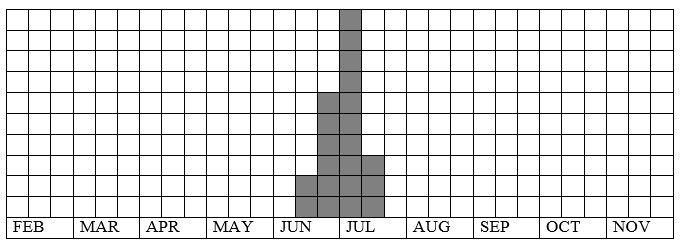
Fig. 74-2. Coenonympha arcania, habitat characteristics.
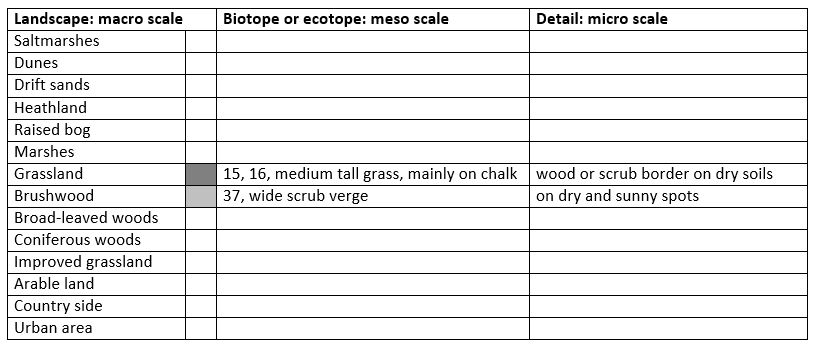
Fig. 74-3. Coenonympha arcania, climate matrix, heat-sums 600 - 2000°d.
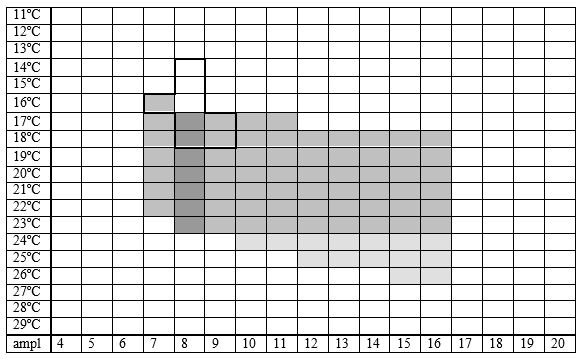
|










